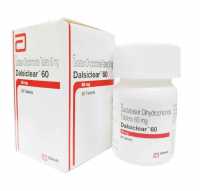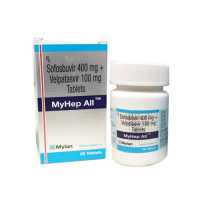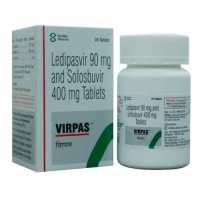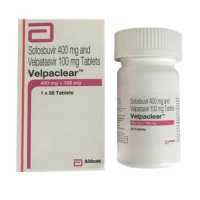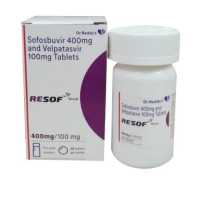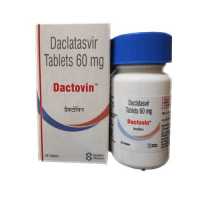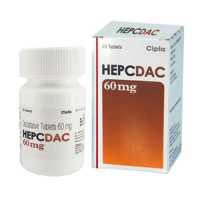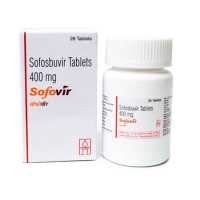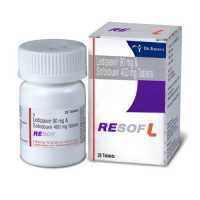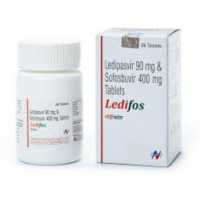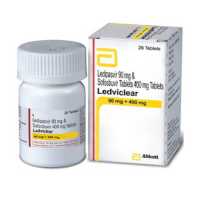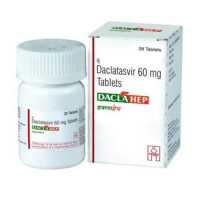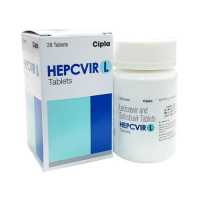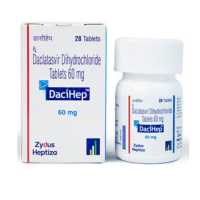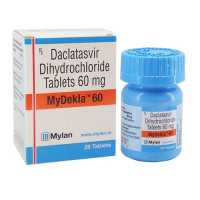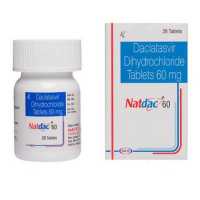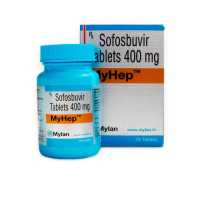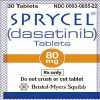What is hepatitis C and how is it treated?
Hepatitis C is an infectious disease of the liver, which is mainly of a chronic type. Despite the measures being taken to combat the disease, the incidence of hepatitis C is currently increasing worldwide.
Hepatitis C | Drugs for treating hepatitis C
-
 Heptos Ribavirin 200mgIn Stock: много
Heptos Ribavirin 200mgIn Stock: много -
 Hepcinat Plus Sofosbuvir - DaclatasvirIn Stock: много
Hepcinat Plus Sofosbuvir - DaclatasvirIn Stock: много -
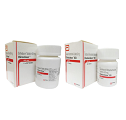 Viroclear-Dalsiclear Sofosbuvir - DaclatasvirIn Stock: много
Viroclear-Dalsiclear Sofosbuvir - DaclatasvirIn Stock: много -
 Resof-Hepcfix Sofosbuvir - DaclatasvirIn Stock: много
Resof-Hepcfix Sofosbuvir - DaclatasvirIn Stock: много -
 Sovihep-Dacihep Sofosbuvir - DaclatasvirIn Stock: много
Sovihep-Dacihep Sofosbuvir - DaclatasvirIn Stock: много -
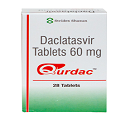 Qurdac Daclatasvir 60mgIn Stock: много
Qurdac Daclatasvir 60mgIn Stock: много -
 Qurled - Sofosbuvir Sofosbuvir 400mgIn Stock: много
Qurled - Sofosbuvir Sofosbuvir 400mgIn Stock: много -
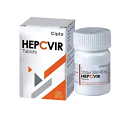 Hepcvir - sofosbuvir Sofosbuvir 400mgIn Stock: много
Hepcvir - sofosbuvir Sofosbuvir 400mgIn Stock: много -
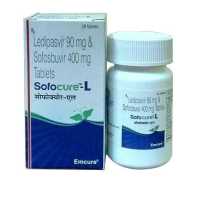 Sofocure L - Ледипасвир + СофосбувирIn Stock: много
Sofocure L - Ледипасвир + СофосбувирIn Stock: много -
 Sofocure - sofosbuvir Sofosbuvir 400mgIn Stock: много
Sofocure - sofosbuvir Sofosbuvir 400mgIn Stock: много -
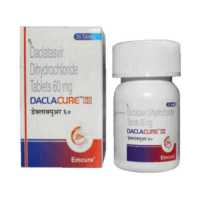 Daclacure - Даклатасвир 60мг таблеткиIn Stock: много
Daclacure - Даклатасвир 60мг таблеткиIn Stock: много -
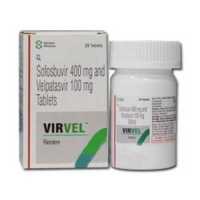 Virvel - Велпатасвир + СофосбувирIn Stock: много
Virvel - Велпатасвир + СофосбувирIn Stock: много -
 Sofokem - Софосбувир 400 мгIn Stock: много
Sofokem - Софосбувир 400 мгIn Stock: много -
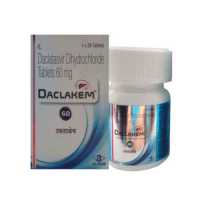 Daclakem - Даклатасвир 60 мгIn Stock: много
Daclakem - Даклатасвир 60 мгIn Stock: много -
 Sofokem L ТаблеткиIn Stock: много
Sofokem L ТаблеткиIn Stock: много -
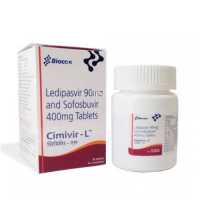 Cimivir L - Ледипасвир + СофосбувирIn Stock: много
Cimivir L - Ледипасвир + СофосбувирIn Stock: много -
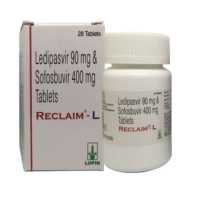 Reclaim L - Ледипасвир + СофосбувирIn Stock: много
Reclaim L - Ледипасвир + СофосбувирIn Stock: много -
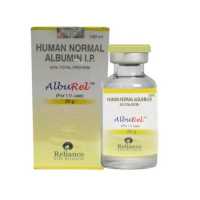 AlbuRel - Альбумин человеческийIn Stock: много
AlbuRel - Альбумин человеческийIn Stock: много -
 Sofab - sofosbuvir Sofosbuvir 400mgIn Stock: много
Sofab - sofosbuvir Sofosbuvir 400mgIn Stock: много -
 Sofab LP - Ледипасвир + СофосбувирIn Stock: много
Sofab LP - Ледипасвир + СофосбувирIn Stock: много -
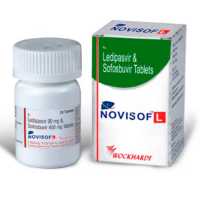 Novisof L - Ледипасвир + СофосбувирIn Stock: много
Novisof L - Ледипасвир + СофосбувирIn Stock: много -
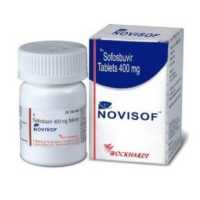 Novisof - sofosbuvir Sofosbuvir 400mgIn Stock: много
Novisof - sofosbuvir Sofosbuvir 400mgIn Stock: много -
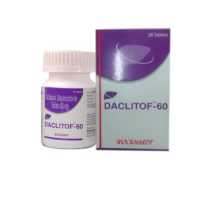 РекомендуемDaclitofIn Stock: много
РекомендуемDaclitofIn Stock: много
Hepatitis C
The liver is such an organ that many people don’t recall until it makes itself felt by some serious illness. And, perhaps, one of the most dangerous diseases of the liver is viral hepatitis C. However, this disease is not a sentence, and it can be completely cured. So, hepatitis C - what is it and how does it appear, how to treat and how to avoid the disease? How the symptoms of the disease are transmitted - everyone needs to know all about hepatitis C.
What is hepatitis C and how is it treated?
Hepatitis C is an infectious disease of the liver, which is mainly of a chronic type. Despite the measures being taken to combat the disease, the incidence of hepatitis C is currently increasing worldwide. The probability of infection is approximately 21 cases per 100,000 people per year. Approximately 70 million people have a causative agent. However, only 20% of them are aware of their disease, and 13% receive effective therapy. Many of the diseased have no information about the danger of their disease, or do not know how to treat it. Approximately 400,000 people die from hepatitis C each year. Hepatitis C | Drugs for treating hepatitis C
What causes hepatitis C, causes
This type of disease is caused by a particular RNA virus, which was discovered only relatively recently, in the late 1980s. Therefore, hepatitis C cannot develop if a person has not had contact with this virus.
Hepatitis C viruses - who they are and how they kill the liver
Hepatitis C virus (HCV) is a small biological entity that has a diameter of 30-60 nm. There are 11 genotypes of the virus and some genotypes may have several subtypes. Three types of virus are most common in Russia and other European countries, and some types are found only in tropical countries. In Russia, the most common subtype is 1b, then in descending order follow subtypes 3, 1a and 2.
Types of viruses differ in their aggressiveness and pathogenicity. The most difficult to cure and dangerous is a disease caused by a single genotype of the virus. Subtype 1b often enters the body through blood transfusions.
Signs of Hepatitis C
Hepatitis caused by virus genotype 3 is also dangerous. It is characterized by rapid progression of pathology. In some cases, chronic hepatitis caused by this type of virus turns into cirrhosis in 7-10 years, and not in 20 years, as is the case with other types of virus. In addition, this virus genotype often affects young people (under 30 years of age). The hepatitis 3a subtype is the most common type of disease among drug users.
In some cases, several types of the virus are detected in the patient's blood. This circumstance may have two plausible explanations - either a person was infected from a carrier of several types of viruses, or there were several episodes of infection.
The virus lives not only in the cells of the liver, but also in other biological fluids of the body. The highest concentration of the virus is found in the blood. In saliva, semen, vaginal secretions and other fluids, the concentration of the virus is much lower. The virus does not pass into breast milk.
Penetrating into the cells of the liver, the virus causes them to produce new viruses. A single cell infected with a virus can produce up to 50 viruses per day, which ultimately leads to its death. Being in the body, the virus constantly mutates, which makes it difficult for the immune system to fight against it, and leads to the depletion of its resources.
Disease development
After the virus enters the body, the immune system produces antibodies to the virus. Events after that can develop in several directions.
If a person’s immune system is strong enough and / or the virus has entered the body in insufficient quantities, then the virus defeats the immune system and it completely disappears from the body. However, antibodies to the virus can persist in the body for a long time. Such a development, however, occurs infrequently - in 10-15% of cases.
In another case, the virus can cause an attack of acute hepatitis C. This event occurs after an incubation period that lasts from 2 days to 6 months. The duration of acute hepatitis is on average 3 weeks. However, acute viral hepatitis is rarely diagnosed, usually its symptoms are also erased. Nevertheless, although usually this form of hepatitis quickly passes, then it becomes chronic.
Finally, a person can develop chronic hepatitis without a prior acute phase of the disease. This option is usually the most dangerous, since in such a case, a person for many years may not be aware of the disease.
Basic principles of treatment for hepatitis C
Hepatitis C treatment is carried out mainly with the help of drugs aimed at destroying the virus in the body. The remaining drugs, such as hepatoprotectors, are of secondary importance. Also practiced correction of the patient's lifestyle, first of all, his diet.
How does hepatitis C spread from person to person?
Signs of complications of hepatitis C
How is the disease transmitted? First of all, it must be remembered that hepatitis C is an anthroponotic disease. This means that the source of infection for one person can only be another person.
The hepatitis virus most often enters the body through the hematogenous route (through blood). Situations in which infection is possible:
blood transfusion;
surgical or dental procedures;
the use of unsterilized reusable syringes;
the use of unsterilized tools in hairdressing, beauty salons, tattoo parlors, etc .;
sexual intercourse;
transmission from mother to newborn baby during childbirth.
Thus, the mechanism of infection with hepatitis C is in many respects similar to the mechanism of HIV infection. However, practice shows that hepatitis C is generally more characteristic of developed countries than AIDS. However, the majority (approximately 50%) of those infected with the hepatitis C virus are drug addicts, as is the case with HIV.
High risk of infection and medical professionals who have constant contact with the blood of patients. The probability of transmission of the virus from mother to newborn baby is relatively low (5% of cases). Hepatitis C | Drugs for treating hepatitis C | Buy medications
Transmission of the virus does not occur by airborne, oral-fecal routes, or through skin contacts (handshakes, etc.), or through the sharing of household items and utensils. The only exceptions are items that can get blood - toothbrushes, scissors, towels, razors.
Also, the virus does not penetrate into breast milk, so the mother infected with hepatitis can calmly feed her baby with milk.
The more severe the symptoms of chronic hepatitis are in humans, the more it is infectious to others. Consequently, the chance to get infected from virus carriers is less than from people in whom the disease is actively progressing.
Symptoms
Hepatitis C treatment
The disease is most often easier to recognize during its acute phase, which appears several weeks after infection.
Symptoms of acute hepatitis C:
weakness,
high temperature (infrequently),
decreased appetite
nausea,
vomiting
stomach ache,
dark urine
light cal,
jaundice (infrequently),
joint pain,
pruritus and rash (infrequently).
Chronic Hepatitis C
Hepatitis C is not for nothing called the "gentle killer." The fact is that the manifestations of the chronic form of hepatitis are usually extremely scarce, and not every patient and even a doctor is able to recognize hepatitis, its viral form, in time. This situation leads to the fact that many of the patients go to the doctor only when they begin to experience severe liver disease (for example, cirrhosis), and doctors are often unable to help the patient.
However, in most cases, patients with chronic hepatitis can experience:
increased fatigue, especially after exercise;
vegetative disturbances;
recurrent pain or heaviness in the right side, especially after eating;
weight reduction.
Reduced liver function leads to a glut of blood with various toxins. First of all, the brain suffers from this, so in patients with hepatitis C, the following are often observed:
depression,
apathy,
irritability,
sleep disturbances
and other negative neurological phenomena.
It goes without saying that few people attribute these non-specific manifestations to signs of severe liver disease.
When severe violations of the liver manifestations of the disease become much more noticeable:
bitterness in the mouth;
yellowing of the skin, mucous membranes;
constant dull pain or heaviness in the right hypochondrium;
swelling in the lower limbs;
ascites (accumulation of fluid in the abdominal cavity);
vessel problems, including dilatation of the vessels in the upper body;
nausea;
decreased appetite;
dyspepsia;
changing the shape of the fingers (fingers in the form of drum sticks);
dark color of urine and light color of feces.
Mental and neurological disorders caused by severe liver failure include:
hallucinations,
episodic loss of consciousness
decrease in intellectual abilities
reduced ability to coordinate.
The first signs and symptoms in women
In fact, there are no signs of hepatitis that are specific to a particular gender - male or female. That is, in women, the acute form of hepatitis is manifested by the same symptoms as in men - signs of intoxication of the body, digestive disorders, dark urine and too light shade of feces.
According to some experts, chronic disease in women is easier than in men. However, this is not due to the inherent "gallantry" of the virus, but rather to the fact that men are more likely to have factors that adversely affect the liver - alcohol abuse, excessive consumption of heavy and fatty foods. However, it does not follow from this that women do not have to treat the disease.
Forecast
Hepatitis C: causes, signs, treatment, prevention
In the absence of therapy, the disease usually progresses, although there is a certain percentage of people who do not experience any impairment of liver function when there is a virus in the body. However, the progression of hepatitis means that the liver tissue is destroyed.
Many related factors worsen the prognosis:
weakened immunity;
alcohol abuse;
other liver diseases, including other viral hepatitis;
infection with several types of virus;
elderly age.
In men, the disease usually develops faster than in women. The younger the person, the more his body is able to resist the virus. Only 20% of infected children fall ill with the chronic form of the disease, while for the rest it goes away on its own.
How many people live with hepatitis C?
How many patients live with hepatitis C is a matter of concern to anyone with pathogens in their blood. With a timely course of treatment, the patient completely gets rid of hepatitis, and if the virus did not manage to destroy the liver badly enough, then the person can live as much as the other people. Therefore, it makes sense only the question of how much a patient can live without treatment.
The answer depends on many factors - the genotype of the virus, the initial state of the immune system, the liver, the organism as a whole, the patient's lifestyle and the presence in it of negative factors affecting the liver. Much depends on the stage at which the disease was detected. Some people can live for decades with hepatitis C, while others after several years develop severe and often incurable complications - cirrhosis and liver cancer. In such a case, the life expectancy of a person can be a few years. Therefore, it is necessary to start serious treatment of hepatitis C immediately after the diagnosis, without waiting for the consequences.
Complications
Hepatitis is a disease in which in most cases it is not the disease itself that leads to death, but its complications.
Within 20 years after infection, the patient with a high probability of developing cirrhosis (15-30% of cases). Another form of severe liver disease is possible - hepatosis (fatty tissue degeneration of the liver tissue). In some cases, the progression of the disease may be liver carcinoma (cancer).
The likelihood of complications depends largely on the type of virus. Similar phenomena are more characteristic of viruses of the first genotype.
Diagnostics
Prevention of Hepatitis C
Hepatitis C can be clearly separated from other types of this disease, only by checking for the presence of a virus in the body. The presence of the virus is determined primarily by a blood test. There are several varieties of this analysis. Analysis of antibodies to the virus - the most common of them. Antibodies are called substances produced by the immune system to fight the virus. There are tests that allow you to determine the level of antibodies in the blood of a particular class.
The presence of antibodies to the virus in the blood, however, does not always mean the presence of the virus itself in the body, because in some cases the body can defeat the virus. It should also be borne in mind that antibodies to the virus may not appear in the blood immediately after infection, but 1-1.5 months later.
More informative is the PCR method, due to which biochemical components of the virus itself can be detected in the blood. Such a study also helps to identify the degree of activity of the virus and its reproduction rate.
Other studies are also conducted - general and biochemical blood tests, coagulogram. However, other types of analysis are auxiliary. A decrease in platelet count and an increase in leukocyte count indicates inflammatory processes in the liver.
Biochemical analysis reveals the level of liver enzymes (bilirubin, AST, ALT, gamma-glutamyl transpeptidase, alkaline phosphatase) and determine the degree of liver damage from them. The more these substances in the blood, the further the process of destruction of the liver tissues has gone. The coagulogram shows changes in the process of blood clotting. Usually, in liver disease, blood clotting is reduced due to a decrease in prothrombin produced in the liver.
High diagnostic accuracy has a biopsy method. It consists in the fact that a small piece of liver tissue is taken for analysis. Usually, this procedure is performed under local anesthesia using a special fine needle.
Also often used the technique of ultrasound. The dystrophic process in the liver is usually accompanied by its increase, a change in the echogenicity of its individual sections. For the same purpose - determining the size of the liver and the study of changes in its internal structure using the methods of CT, X-ray, MRI. Encephalography helps to identify concomitant hepatic failure encephalopathy.
Treatment
After the diagnosis of hepatitis C, the treatment should be carried out by a hepatologist. Chronic hepatitis is always treated on an outpatient basis.
More recently, the disease was considered incurable, although long-developing. However, this situation has changed with the advent of a new generation of antiviral drugs.
The traditional scheme of treatment of hepatitis C includes interferons and the drug ribavirin. Interferons are substances similar to those produced by immune cells to fight the virus. There are various types of interferons. The main functions due to which interferons combat the virus:
protection of healthy cells from the penetration of the virus into them,
preventing reproduction of the virus,
activation of the immune system.
The duration of the course of treatment with ribavirin and interferon is determined by the doctor. In this case, the daily dose of ribavirin is usually 2000 mg. Interferon injections are usually carried out 3 times a week, and long-acting interferon - 1 time per week. However, the effectiveness of this therapy leaves much to be desired. Usually it does not exceed 50%.
Recently, a number of new antiviral compounds (sofosbuvir, velpatasvir, daclatasvir, ledipasvir) have been developed. These compounds belong to the class of drugs of direct action (PDP). Often, several active compounds are combined in one preparation (sofosbuvir and ledipasvir, sofosbuvir and velpatasvir). The mechanism of action of PPD is based on the incorporation into the virus RNA, thereby disrupting the synthesis of important proteins used in the process of its replication.
It is possible to use PPD of various types separately and combining them with each other. Properly chosen treatment allows you to destroy the virus in 95% of cases. The course of therapy with these drugs can take from one to six months - it all depends on the type of virus, as well as the degree of development of the disease. However, the decrease in viral activity is observed from the first days of taking the drugs. With hepatitis, not burdened with cirrhosis, the duration of treatment is usually 3 months. If it is not possible to quickly get rid of the virus, then interferon and ribavirin can be added to the treatment regimen.
The disadvantage of modern drugs is their high cost, and the course of treatment with original drugs is often comparable in price to the cost of a new imported car. Naturally, in our country, it is far from affordable for everyone. However, there are a number of somewhat cheaper generics from India.
The use of drugs of the class of hepatoprotectors is aimed at supporting the liver and slowing down the processes of its degradation. Hepatoprotectors reduce the rate of formation of connective tissue in the liver, strengthen the walls of hepatocytes, prevent the accumulation of fat in the liver, stimulate the formation of bile. However, hepatitis cannot be cured of hepatitis, this should be remembered. However, hepatoprotectors can slow the progression of the disease if the patient does not have the ability to conduct etiotropic therapy.
The main classes of hepatoprotectors are:
ursodeoxycholic acid,
essential phospholipids,
milk thistle preparations
artichoke extract.
Also, a doctor simultaneously with antiviral drugs can be appointed immunomodulators (including herbal), drugs normalizing function and blood composition.
Choosing the right diet also helps slow the progression of the disease. It is recommended to exclude foods that adversely affect the liver, contributing to the stagnation of bile. It is necessary to eat a little, in small portions, avoid overeating and liver overload. It is forbidden with the disease and alcohol. Use of hepatotoxic drugs should be limited.
The effectiveness of the treatment will evaluate the blood test. If the amount of virus has decreased, then the concentration of bilirubin in the blood of liver enzymes decreases. Analysis of PCR allows to determine the quantitative reduction in the number of viral particles.

